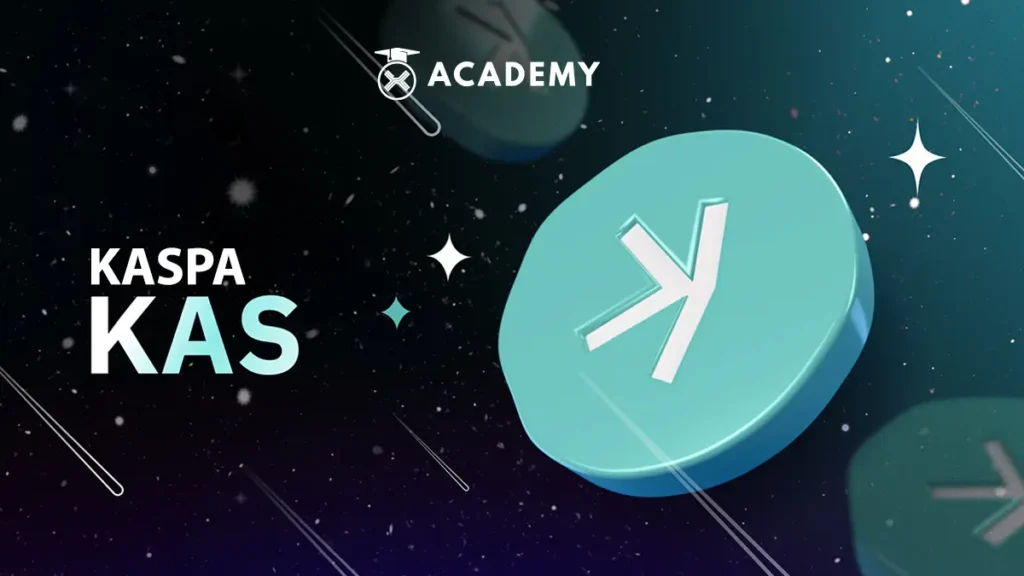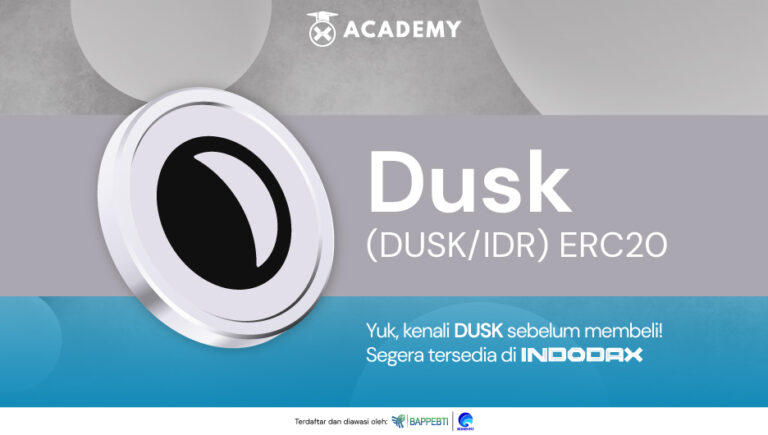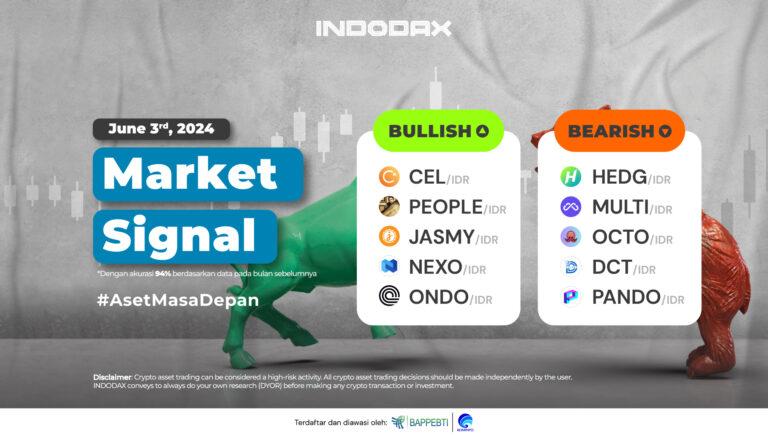One of the essential elements in blockchain technology is Proof-of-Work (PoW) consensus. PoW consensus is one of the consensus mechanisms used in blockchain networks to reach an agreement on the state of legitimate transactions.
Meanwhile, crypto is a digital asset that uses cryptography to secure transactions and control the creation of new units. Bitcoin is one of the first examples of a crypto asset introduced in 2009.
Among the blockchain networks that use the PoW consensus mechanism is Kaspa (KAS). Check out the following review to understand what Kaspa (KAS) is, its founders, how it works, tokenomics, and its features.
What is Kaspa (KAS)?
Kaspa is a blockchain platform that adopts a Proof-of-Work (PoW) consensus mechanism and implements a BlockDAG (Directed Acyclic Graph) structure that allows multiple blocks to exist simultaneously in parallel.
The approach is designed to address the problem of high orphan rates that often occur on blockchain networks, where two blocks are mined simultaneously, but only one is accepted by the network.
Inspired by concepts introduced by Satoshi Nakamoto, the Kaspa project aims to maintain key elements of Bitcoin (BTC) consensus. This includes implementing a Proof-of-Work (PoW) mechanism to increase network security and maintain the principle of decentralized governance.
Meanwhile, citing the kaspa.org page, the vision behind this project is to build a Nakamoto-like service that operates as fast as internet speeds allow.
The Kaspa team states that they want to create a system that exceeds the limits of Satoshi’s v1 protocol (known as “Nakamoto Consensus”), but still adheres to the principles embedded in Bitcoin.
Unlike Satoshi’s vision, Bitcoin did not become a peer-to-peer electronic cash system. Instead, it established itself as the ultimate store of value, or e-gold, and Bitcoin is largely identifiable as that.
That’s no small achievement, as this is one of human history’s most important financial revolutions. However, it leaves much room for improvement (from L1) and/or for choosing different trade-offs (for L1).
Founder of Kaspa
Quoting kaspa.org, DAGLabs was founded by Dr. Yonatan Sompolinsky to implement the GHOSTDAG protocol that Yonatan co-invented with his then Ph.D. supervising professor, Professor Aviv Zohar.
Yonatan began gaining a reputation in crypto academic circles in 2013 when he and Professor Zohar developed the GHOST protocol, a protocol notable for being cited in the Ethereum whitepaper as a design goal.
Yonatan holds a postdoctoral position at Harvard researching transaction sequencing protocols and MEV (Miner Extractable Value).
How Does Kaspa Work?

Unlike the typical blockchain, the Kaspa blockchain adopts the GHOSTDAG protocol, where blocks are created parallel to coexist and reach consensus.
This approach, known as blockDAG, keeps the process secure while maintaining a high block rate. The goal of Kaspa, however, is to provide higher transaction speeds, reaching 10 or even 100 blocks per second. This potential scalability sets Kaspa apart from many other blockchain networks.
Its advanced features include reachability, which allows users to explore DAG topologies, block data pruning (with plans for block header pruning), and Simple Payment Verification (SPV). This cryptographic technique makes verifying the authenticity of transactions easy without downloading the entire blockchain.
In addition, the project provides subnetwork support that makes it easier to implement layer-2 solutions and to improve overall functionality and scalability.
Kaspa Tokenomics
Quoting the kaspa.org page, the blockDAG architecture, a fast block creation rate allows more mining decentralization and enables effective solo-mining even at lower hashrates.
Launched fairly in November 2021 with no pre-mine, pre-sales, or coin allocation. Kaspa is 100% decentralized, open-source, and community-managed. Kaspa’s maximum supply is 28,700,000,000 coins, with an emission schedule that halves yearly through smooth monthly reductions by a factor of (1/2)^(1/12).
The first mining uses CPUs during the first month of the mainnet. On December 6, 2021, one of the community members wrote and released the first open-source GPU mining software for Kaspa.
For almost a year and a half, Kaspa was mostly mined using GPUs and, at some point, also using FPGAs (the exact date of emergence is unknown as public FPGA bitstreams appeared long after community members started talking about mining their FPGAs).
On April 13, 2023, the ASIC era began when a representative from the IceRiver company joined the Discord server and introduced their product range.
Kaspa’s Unique Features
Quoting the kaspa.org page, Kaspa was developed to solve the trilemma of using digital assets: Security, Scalability, and Decentralization.
Using the revolutionary blockDAG as an alternative to blockchain, Kaspa enables the fastest, most scalable, and secure transactions without sacrificing decentralization. The following are Kaspa’s tokenomics:
Fastest Transaction
Kaspa’s blockDAG network generates multiple blocks to post transactions to the ledger every second. With transactions fully confirmed within 10 seconds, Kaspa is an ideal choice for everyday transactions.
Instant Confirmation
Kaspa is designed to be hundreds of times faster than Bitcoin, with every Kaspa Transaction visible to the network within one second and every transaction fully confirmed within 10 seconds on average.
Scalability
Kaspa solves the scalability problem with its ability to generate and confirm multiple blocks per second. It does so without compromising security and decentralization, as seen in Proof-of-Stake networks.
Proof-of-Work
Kaspa uses the kHeavyHash algorithm ready for optical mining for consensus and network security. This algorithm, combined with high-capacity DAG and zero-waste blocks, makes it more energy efficient than other PoW networks.
Security
Kaspa leverages a highly secure block network without compromising decentralization. Achieved with pure unstaked proof-of-work, combined with the revolutionary GhostDAG consensus mechanism.
BlockDAG
Overcoming blockchain issues, Kaspa processes all blocks in parallel connecting all side-chains. This results in a DAG structure that drastically increases block formation per second and creates blockDAG.
Kaspa Technology
Kaspa is a crypto asset that uses the GHOSTDAG protocol and implements a proof-of-work (PoW) consensus mechanism. Kaspa adopts the GHOSTDAG protocol, which stands for Greedy Heaviest Observed Sub-Tree Directed Acyclic Graph.
In contrast to conventional blockchains, GHOSTDAG allows the creation of blocks in parallel, enabling faster and more efficient block creation, even reaching up to 10 or 100 blocks per second.
Kaspa offers a range of features, including Reachability for querying the DAG topology, block data pruning (with plans for block header pruning), SPV (Simplified Payment Verification) proofs, and support for subnetworks that ease the implementation of future layer 2 solutions.
Get to know Kaspa Mining and How

Quoting the kaspa.org page, Kaspa is currently the fastest proof-of-work mineable coin available while maintaining decentralization. The blockDAG architecture with a fast block generation rate allows more mining decentralization and enables effective solo mining at lower hashrates.
Kaspa mining is based on kHeavyHash, a modified form of the HeavyHash algorithm readily used by “optical-miners.” kHeavyHash uses matrix multiplication organized in 2 keccacs.
kHeavyHash is more energy efficient, core dominant, and can be mined using GPUs, FPGAs, and specialized mining equipment in the future.
Meanwhile, quoting the f2pool.io page, here is a Kaspa mining guide through the Kaspa mining settings and process on f2pool, namely:
1. Get the appropriate hardware
- Kaspa can be mined efficiently using ASICs.
- Kaspa cannot be mined efficiently using GPU cards.
- Kaspa cannot be mined efficiently using CPU cards.
2. Sign up for an f2pool account
- Kamu perlu membuat akun f2pool sebelum menambang Kaspa. Jika kamu belum memiliki akun maka silakan mendaftar terlebih dahulu.
- Mengatur nama akun akan diperlukan untuk konfigurasi. Kamu bebas membuat beberapa sub-akun untuk memantau mesin penambangan milikmu.
3. Configure the mining software
For configuration, you can use a browser that accesses your machine’s IP address or batch management software. You need to enter the following information into your mining device:
- Pool/URL: stratum+tcp://kas-na.f2pool.com:1400
- User/Worker: account_name.worker_name
- Password: Your choice, for example, 123
IMPORTANT NOTES:
- Your account name is provided in your “Account Settings.”
- The worker_name is optional, but it is recommended that you label each of your mining devices with a different worker_name for more efficient monitoring.
- To set the Pool/URL, if your miner’s hashrate is more than 2 TH/s, use port 1430 instead of 1400 for better performance. In addition, more regional URLs are available in TCP or SSL format for your choice:
|
Region |
TCP |
SSL |
|
North America |
stratum+tcp://kas-na.f2pool.com:1400
stratum+tcp://kas-na.f2pool.com:1430 |
stratum+ssl://kasssl-na.f2pool.com:1410
stratum+ssl://kasssl-na.f2pool.com:1430 |
|
Europe |
stratum+tcp://kas-euro.f2pool.com:1400 stratum+tcp://kas-euro.f2pool.com:1430 |
stratum+ssl://kasssl-euro.f2pool.com:1410 stratum+ssl://kasssl-euro.f2pool.com:1430 |
| Asia | stratum+tcp://kas-asia.f2pool.com:1400
stratum+tcp://kas-asia.f2pool.com:1430 |
stratum+ssl://kasssl-asia.f2pool.com:1410 stratum+ssl://kasssl-asia.f2pool.com:1430 |
4. Add payment address
You need to get a crypto wallet address if you don’t already have one. The Kaspa wallet address is required for you to receive your mining rewards.
You need to get a payment address to collect your mining rewards. You can add or change your payment address in “Payment Settings”.
f2pool distributes mining rewards daily to each user who reaches the payout limit, which is 100 KAS. The f2pool payout scheme is 1% PPLNS.
You can get a wallet on their resources page or from exchanges like MEXC or Gate.io. As a note, always research when choosing a wallet provider or exchange.
5. Start mining
Your machine is now ready to mine. You can manage your account settings and monitor your hashrate, rewards, and so on on your dashboard or within the f2pool app.
Conclusion
To conclude, Kaspa is an innovative crypto project that has a variety of interesting features.Implementing the GHOSTDAG protocol, Kaspa enables block generation in parallel, creating a faster and more efficient blockchain environment with the ability to achieve up to 10 or even 100 blocks per second.
Notable features include Reachability to query the DAG topology, block data pruning, SPV proofs, and support for subnetworks that make Kaspa a project with potential to implement layer 2 solutions in the future.
On the other hand, Kaspa’s price dynamics are also an important aspect, with the potential for the asset’s value to increase based on innovation and adoption. Participation or investment in Kaspa can be expected to provide an opportunity to take part in the future development of the project.
Ultimately, it is important to understand that Kaspa offers a unique combination of cutting-edge technology, advanced features, and potential asset value growth. That makes it an attractive option for those interested in getting into the blockchain ecosystem.
Invest in Crypto on INDODAX
Well, now you understand what Kaspa (KAS) is, its founders, how it works, tokenomics, and features.
Furthermore, if you are interested in investing in crypto assets, it is better if you first check the crypto coin rating. After checking the price, you can buy crypto assets on a trusted crypto exchange only on INDODAX.
As a reminder, INDODAX is an Indonesian crypto exchange and a well-known platform for trading or buying and selling crypto assets in Indonesia. Being a crypto asset trading platform that has proven its reliability, INDODAX continues to provide reliable services for investors.
By providing easy and convenient access to the crypto asset market, INDODAX ensures transaction security for its users.
Start investing in crypto assets now with INDODAX!








